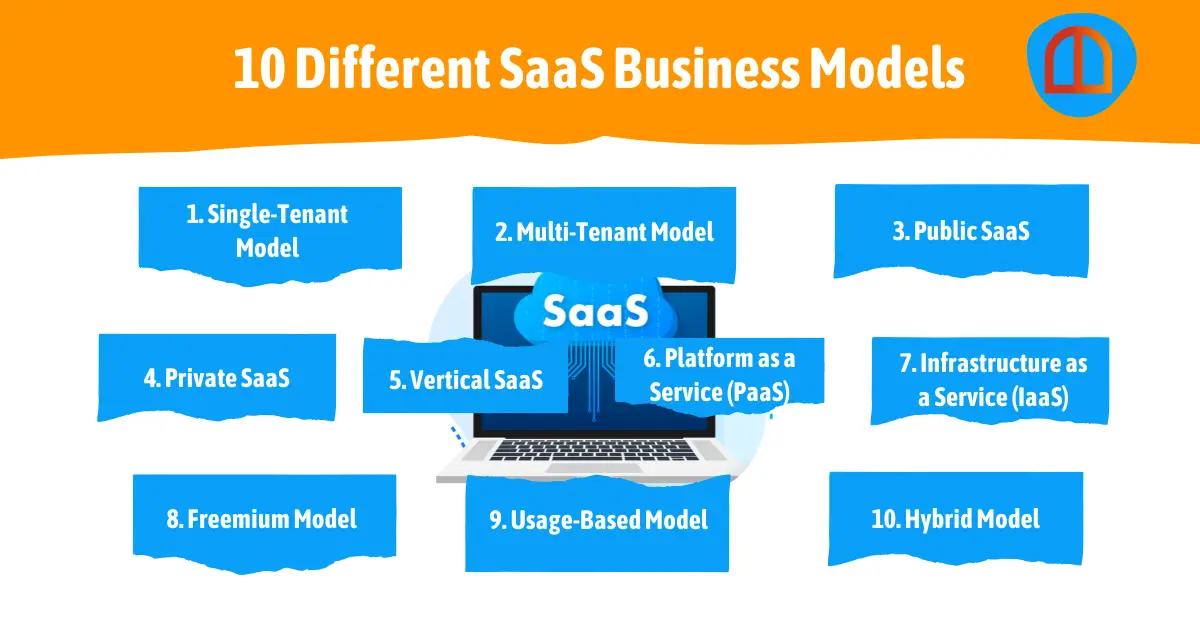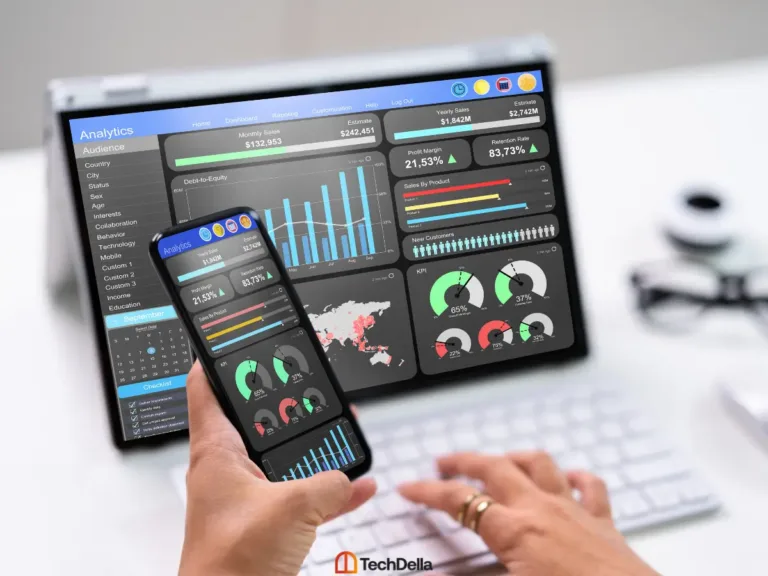
Businesses have moved from traditional brick-and-mortar storefronts to incorporating different eCommerce business models and digital solutions. The SaaS business model is yet another business model that can be attributed to the rapid evolution of technology.
SaaS, which stands for Software as a Service, represents a paradigm shift in the way software is delivered and consumed by businesses and customers alike. From data protection solutions online to remote work productivity solutions, the SaaS business model is here to stay.
In this blog, we’ll look at what a SaaS business model is, the different SaaS business models, and how to build a SaaS business model.
What is a SaaS Business Model?
A SaaS (Software as a Service) business model is a method of delivering software applications over the internet.This model is transforming the traditional approach to software development, distribution, and usage.
In this model, instead of users purchasing and installing software on their local devices, they access and utilize the software through the internet. Typically via a web browser or a dedicated interface.
Essential Characteristics of the SaaS Business Model You Should Know
1. Subscription-Based Pricing
One of the defining features of the SaaS model is its subscription-based pricing structure. Users pay a recurring fee, usually on a monthly or annual basis, rather than making a one-time upfront payment. This approach provides businesses with a more predictable and steady revenue stream.
2. Cloud-Based Access
SaaS applications are hosted in the cloud, allowing users to access them from any device with an internet connection. This eliminates the need for complex installations and enables users to work from anywhere, promoting flexibility and remote collaboration.
3. Continuous Updates and Improvements
Unlike traditional software that might only receive major updates periodically, SaaS applications are continuously updated. This ensures that users always have access to the latest features, security patches, and improvements without the need for manual installations.
4. Scalability
SaaS solutions are designed to scale with the needs of the user. Businesses can easily adjust the number of subscriptions or the features they utilize based on their evolving requirements. This scalability is particularly beneficial for growing enterprises.
5. Interoperability and Integration
SaaS applications are often designed to seamlessly integrate with other software and services. This interoperability enables businesses to create customized solutions by combining different SaaS applications that cater to specific aspects of their operations.
6. Data Security and Privacy
Security is a top priority in the SaaS model. Providers implement robust security measures, such as encryption and multi-factor authentication, to protect user data. This emphasis on security is crucial, especially when dealing with sensitive information.
7. User Accessibility
The SaaS model emphasizes user accessibility, allowing individuals and businesses to use software applications without the need for extensive technical expertise. The user-friendly nature of SaaS contributes to its widespread adoption.
Why the SaaS Business Model Is the Future of Software and eCommerce
The SaaS business model has quickly become one of the most disruptive forces in the tech and eCommerce world — and for good reason.
First, it introduces a subscription-based pricing structure that completely changes how businesses access and pay for software. Instead of hefty upfront costs, companies can now enjoy flexible, pay-as-you-go access to the tools they need.
Second, SaaS eliminates the hassle of traditional software installations by hosting everything on the cloud. No complicated setups, no constant manual updates — just a seamless, efficient solution that simply works.
It’s no surprise that more and more tech companies — and even a growing number of eCommerce businesses — are making the switch to the SaaS model to stay competitive and scale faster.
8 Benefits of SaaS Business Model
If you are planning to start a SaaS business or switch your business to the SaaS model soon, then you should know some of the advantages of SaaS business models.

Here are eight key advantages:
1. Cost Efficiency
The subscription-based pricing structure of SaaS eliminates the need for substantial upfront investments in software licenses. Businesses can start using the software by paying regular subscription fees, reducing initial financial barriers in their budget.
With a recurring subscription model, businesses can better predict and manage their expenses. Your business can enjoy improved budgeting and financial planning with this predictability.
2. Accessibility and Flexibility
SaaS applications are cloud-based, enabling users to access them from any device with an internet connection. If your business caters to remote teams, then you’ll appreciate the flexibility in working arrangements.
3. Automatic Updates and Maintenance
SaaS providers handle software updates and maintenance, ensuring that users always have access to the latest features and security enhancements without needing to manage manual installations. This relieves the burden on users and IT teams.
4. Scalability
The SaaS model is inherently scalable. Businesses can easily adjust the number of user subscriptions or add features as their needs evolve, providing a flexible solution that grows with the organization.
5. Interoperability
Many SaaS applications are designed to integrate seamlessly with other software and services. This interoperability allows businesses to build a cohesive digital ecosystem by combining different SaaS solutions that cater to various aspects of their operations.
6. Security and Compliance
SaaS providers invest significantly in security infrastructure, often surpassing what individual businesses can achieve on their own. This commitment to security includes encryption, regular security audits, and compliance with industry regulations, instilling confidence in users.
7. Focus on Core Competencies
With SaaS, businesses can delegate the responsibility of software management, updates, and infrastructure maintenance to the service provider. You can focus on your business’s core competencies, leaving the technical aspects to experts.
8. User-Centric Approach
SaaS applications are typically designed with a user-friendly interface, making them accessible to a broader audience. To be honest, this ease of use contributes to user adoption and satisfaction.
10 Different SaaS Business Models
SaaS (Software as a Service) business models come in various forms, each tailored to meet specific needs and preferences.

Here are some common SaaS business models:
1. Single-Tenant Model
In the single-tenant or dedicated model, each customer or organization has its own isolated instance of the software. This provides a high level of customization and control, but can be more resource-intensive for both the provider and the user.
2. Multi-Tenant Model
The multi-tenant model serves multiple customers on a shared infrastructure. All users share the same application and database, but the system is designed to keep their data and configurations separate. This model is more cost-effective but may have limitations in terms of customization.
3. Public SaaS
Public SaaS providers offer their applications to the general public. Users typically subscribe to the service through a website, and the software is hosted on the provider’s servers. Examples include productivity tools like Google Workspace and communication platforms like Slack.
4. Private SaaS
In a private SaaS model, the software is developed and maintained for a specific organization or a group of related organizations. It provides a level of exclusivity and customization, often catering to the unique needs and workflows of a particular enterprise.
5. Vertical SaaS
Also known as industry-specific or niche SaaS, vertical SaaS focuses on serving the needs of a particular industry or vertical. These solutions are tailored to address the specific challenges and requirements of businesses within a defined sector, such as healthcare, finance, or education.
6. Platform as a Service (PaaS)
PaaS goes beyond traditional SaaS by providing a platform that allows users to develop, run, and manage their own applications. It offers a framework for building custom solutions and is often used by developers to create software without dealing with the underlying infrastructure.
7. Infrastructure as a Service (IaaS)
While not strictly a SaaS model, IaaS deserves mention. In IaaS, users rent virtualized computing resources over the internet. SaaS providers may utilize IaaS to host their applications. It gives businesses more control over the infrastructure while still benefiting from a cloud-based solution.
8. Freemium Model
The freemium model offers a basic version of the software for free, with premium features available for a subscription fee. This allows users to experience the product before committing to a paid plan. Many SaaS applications, especially in the productivity and collaboration space, use this model.
9. Usage-Based Model
This model charges users based on their actual usage of the software. Pricing is tied to specific metrics such as the number of transactions, data storage, or API calls. It offers flexibility for businesses with fluctuating needs.
10. Hybrid Model
The hybrid SaaS model combines aspects of different models to provide a tailored solution. For example, a provider may offer a core multi-tenant application with additional customization options for specific clients.
Check out our guide on How to Launch A SaaS Product.
SaaS Business Model Examples
Some popular SaaS business model examples are:
- Trello
- Zoom
- Google Workspace
- Salesforce
- Adobe Creative Cloud
- Netflix
- DocuSign
- Slack
- Mailchimp
- Spotify
Final Thoughts
So, the big question: should you switch to a SaaS business model?
The truth is, it depends on the type of business you run and the type of digital product you sell. While the benefits can be significant, careful consideration of your business type, digital product, and market dynamics is crucial.
For instance, switching to a SaaS business model may be a good idea for a mobile app development business. However, it is a terrible idea for a retail business focused on selling physical goods in a traditional brick-and-mortar store.
If you have a SaaS business idea, make sure you research the different SaaS business models carefully. A well-thought-out SaaS business marketing strategy, coupled with thorough research and customer communication, will help you make an informed decision that aligns with your business goals.
Related Marketing Strategies


18 Software Startup Ideas for Tech Entrepreneurs


